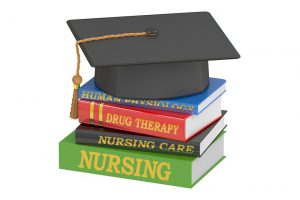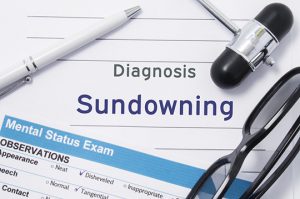Every day, healthcare professionals encounter clients struggling with addiction, also called substance abuse disorder. Because nurses are often the “front line” in providing care and education for these clients, it’s important to learn about addiction: what it is, who’s at risk, and what to look for.
What is addiction?
The American Psychiatric Association defines addiction as “a complex condition, a brain disease that is manifested by compulsive substance use despite harmful consequence.” In September 2019, the American Society of Addiction Medicine went further: “Addiction is a treatable, chronic medical disease involving complex interactions among brain circuits, genetics, the environment, and an individual’s life experiences. People with addiction use substances or engage in behaviors that become compulsive and often continue despite harmful consequences.”
People can become addicted to many substances. Some examples:
- Alcohol
- Marijuana
- Tobacco
- Opioid pain killers, such as codeine and oxycodone, heroin
- Sedatives, hypnotics and anxiolytics (medicines for anxiety such as tranquilizers)
- PCP, LSD and other hallucinogens
- Inhalants, such as, paint thinners and glue
- Cocaine, methamphetamine and other stimulants
There are also behavioral addictions, involving activities: eating, gambling, exercising, sex, internet surfing, and shopping are examples.
How do people get addicted?
No one sets out to abuse drugs and become addicted. According to the National Institute on Drug Abuse, people first try a substance for a seemingly harmless reason:
- to find a sense of pleasure (“get high”)
- to relieve stress or tension
- to improve performance
- to satisfy curiosity about a drug
- to give in to peer pressure
Any drug or substance has the potential to be addictive. Some people have the ability to stop using, others do not. Drugs work by increasing the amount of dopamine in the brain. Dopamine produces sensations of pleasure. Drugs cause an overwhelming release of dopamine, causing a rush, a high, and pure bliss.
They also cause a crash and depression when the effects wear off; the brain stops producing normal levels of dopamine, so the after-effects can feel devastating. People go from using in a social setting, or for a single reason, to using in order to avoid the crash. Over time, they develop a tolerance to their drug, requiring greater amounts. They become obsessed with obtaining a supply to simply feel “normal.” Everything else—family, friends, work, interests--becomes secondary to their drug.
Who is at risk?
Some people are especially vulnerable to addiction. Being at risk does not mean that they will automatically develop the disease, but that they should be especially vigilant:
- Hereditary links to addiction: Genetics may account for a 40-60% addiction risk.
- Environmental exposure to drugs: Social media, entertainment, religion, culture, and “learned environment” activities can affect substance abuse.
- Stressful lifestyle: People with chronic, high-level stress often turn to alcohol or marijuana to self-soothe and relax, especially if they don’t have other social support.
- Family history of addiction: Just being around family members or authority figures who use or abuse alcohol or drugs can influence later use or abuse.
- Poor mental health: personality traits such as impulsiveness, thrill seeking, depression, anxiety, eating disorders, PTSD, and other psychiatric issues.
- Early use of drugs, alcohol, or tobacco: The earlier a person first tries a mood-altering substance, the greater the likelihood of developing an addiction later in life.
Access to drugs: Knowing that a drug, substance, or alcohol is available allows for easy use in any situation or for any reason.
Teens: Especially vulnerable
The Partnership for Drug Free Kids has a serious warning: “Ninety percent of addictions start in the teen years.” The general risk factors listed above can be present for adolescents, but there are additional factors based on their developmental stage.
Teenagers should be told if they’re at greater risk because of genetics or a family history of addiction. The Partnership recommends saying something like, “Your grandfather had a disease called alcoholism. It means he wasn’t able to drink alcohol, and when he did drink… it really hurt me and other people he loved…This disease can run in families so it’s something you need to watch out for — and I’m going to help you do that.”
Young people who with Attention Deficit Hypertension Disorder (ADHD), depression, anxiety, or bipolar disorder have an increased risk, because they can have a difficult time controlling their thoughts, emotions, and impulses. They may try drugs or alcohol to self-medicate and feel more confident around their peers. If they start to use drugs or alcohol, their underlying psychiatric condition can be difficult to detect or treat. Parents and other adults should be instructed to look for signs of drug or alcohol abuse, which cause “co-occurring disorders” for the teen.
Teens who have experienced some type of trauma in earlier life are also more likely to develop a substance abuse disorder. The Kaiser Permanente Adverse Childhood Experience survey found that the trauma can be a serious illness or injury; being in an auto accident or natural disaster; physical, emotional, or sexual abuse; loss of a parent or loved one; or having a parent with mental illness.
Peer pressure cannot be underestimated as a risk for teenagers. Research shows that peers can have greater influence than parents. Peer pressure affects many aspects of a teen’s life: academic achievement, clothing, entertainment, sexual identity and activity; healthy practices…and substance use. While peer pressure can be positive or negative, the bottom line is that when their friends encourage a teen to smoke, drink, or try a drug, the teen is more likely to do so.
What changes to look for
People who abuse substances, or have become addicted, will make attempts to hide their use. Some of the warning signs that a substance abuse disorder is present include:
- Changes in habits and mannerisms: Family and friends may first notice a change in friends or associates. People who were previously sociable become withdrawn; they refuse to join gatherings and celebrations, often making lame excuses for their absence. They may withdraw, become uncommunicative, skip meals, neglect chores or responsibilities, and lose interest in activities—with others or solo—that they used to enjoy. Their routines change, including being out at unusual times. If confronted, they get angry and defensive.
- Changes in appearance:A person with a substance abuse disorder often loses interest in their appearance. Poor grooming, dirty or wrinkled clothing, inappropriate dress, unusual body odors, and lack of concern for personal hygiene are signs of addiction. Sudden weight gain or loss, bloodshot eyes, dilated or constricted pupils, and sleeping too much or too little are also indications. Skin tone changes or blotchy skin may be present, as well as frequent scratching and picking at the skin.
- Changes in behavior:Look for warning signs such as wearing long sleeves (to cover up needle marks) even in warm weather. They may start creating elaborate stories about where they go and how they spend their time. Watch for stealing or frequent requests to borrow money. They may have unusual new possessions like scales, lighters, needles, balloons, tin foil, mirrors, pipes, vials, zip-lock bags, bindles, and butane torches. Another warning behavior sign is risk-taking behavior, related to finding a way to satisfy cravings.
- Changes in performance: As abusers and addicts seek to maintain a supply of their drug, and find time to use it, their priorities shift. They become less interested in work or school obligations and performance. They will be tardy, call in sick, or simply not show up. When they are present, they aren’t able to pay attention or work properly, because they are tired or ill. S. employers pay $81 billion a year for lost productivity due to drug abuse. The cost for elementary and secondary schools is estimated at $41 billion a year.
As a nurse, you play an important role in educating others about the risks of substance abuse, and how to identify it. Knowing some facts, and being able to share them, may save someone’s life.
 By
By 



